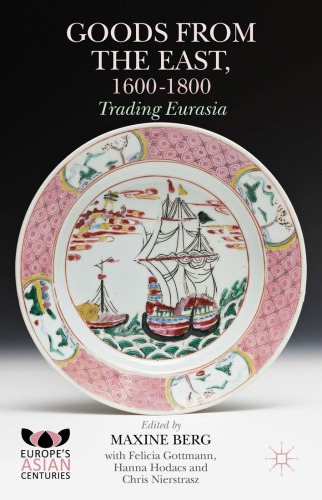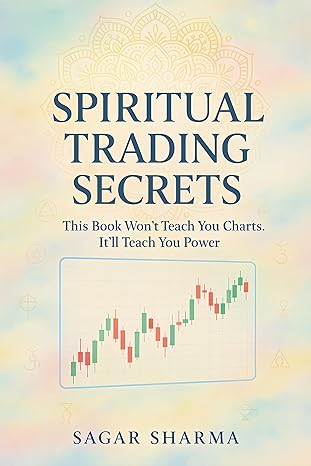Asian goods held a special fascination in European imaginations. Exotic and luxury goods were long associated with sensual oriental origins. Their significance went deep into social structures and cultural men- talities. Adam Smith saw the significance of ‘exotic baubles’ in shifting social structures and undermining the political power of the landed elites. He argued that ‘The discovery of a passage to the East Indies, by the Cape of Good Hope, which happened much about the same time, opened, perhaps, a still more extensive range to foreign commerce than even that of America, notwithstanding the greater distance... Europe, however, has hitherto derived much less advantage from its commerce with the East Indies, than from that with America ’ 1 Jan de Vries, more recently, has found their power among the factors motivating significant changes in the household behaviour of North Europeans, thus generating an industrious revolution that went on to foster industrialization. How irresistible were these goods, and how long did this last? By the eighteenth century, the oriental curiosities that found their way into the cabinets of Europe’s early modern and Renaissance elites became the products of a systematic European and Asian trade reach- ing a wide consuming public. A trade conducted by Europe’s monopoly East India Companies and myriad private traders made the difference, and provided a whole new level of interaction. Asian-sourced con- sumer goods designed for European markets were to become seam- lessly embedded into European material cultures. This book brings together leading historians and early-career researchers to offer new insight and fresh materials on the trade in Asian goods and how these affected Europeans. Scholars who have researched colonial and Indian Ocean trade join those working on European consumer cultures and 2 Maxine Berg industrialization. Established scholars Jan de Vries, Om Prakash and Jos Gommans join a new generation of researchers investigating the con- nections between European consumer cultures and Asian trade. The fascination of Europe’s monarchs, courts and elites with fabulous wealth, exotic flora and fauna and exquisitely crafted fine luxury goods goes back to the Bronze Age. The opening of sea routes to India and China from the end of the fifteenth century changed the game, and by the beginning of the seventeenth century, Northern Europe had estab- lished its famed East India Companies to ply a regular commerce to India, Southeast Asia and China. The surprise packages that filled the cabinets of curiosities of Europe’s elites were displaced over the course of the eighteenth century by the cargoes, auctions, toy shops, drapers, china shops and pedlars that brought Asian export ware onto the bod- ies and into the cupboards of Europe’s merchants and townspeople. We are only now uncovering how deeply these goods penetrated European social structures, and especially now beyond the core regions of Britain and the Netherlands.
چکیده فارسی
کالاهای آسیایی در تصورات اروپایی جذابیت خاصی داشت. کالاهای عجیب و غریب و لوکس از دیرباز با منشاء شرقی شهوانی مرتبط بودند. اهمیت آنها عمیقاً در ساختارهای اجتماعی و ذهنیت های فرهنگی بود. آدام اسمیت اهمیت «بابل های عجیب و غریب» را در تغییر ساختارهای اجتماعی و تضعیف قدرت سیاسی نخبگان زمین دار می دید. او استدلال کرد که «کشف گذرگاهی به هند شرقی، توسط دماغه امید خوب، که تقریباً در همان زمان اتفاق افتاد، شاید دامنه وسیعتری را به روی تجارت خارجی حتی از آمریکا باز کرد، با وجود این با این حال، اروپا تاکنون از تجارت خود با هند شرقی از مزیت بسیار کمتری نسبت به تجارت با آمریکا بهره برده است. اروپای شمالی، در نتیجه انقلابی سخت به وجود آورد که صنعتی شدن را تقویت کرد. این کالاها چقدر مقاومت ناپذیر بودند، و چقدر دوام داشت؟ در قرن هجدهم، کنجکاویهای شرقی که به کابینه نخبگان اولیه اروپای مدرن و رنسانس راه یافتند، محصول یک تجارت سیستماتیک اروپایی و آسیایی شدند که عموم مردم را به خود جذب کرد. تجارتی که توسط شرکت های انحصاری اروپا در هند شرقی و هزاران تاجر خصوصی انجام شد، تفاوت را ایجاد کرد و سطح کاملا جدیدی از تعامل را ارائه داد. کالاهای مصرفی با منشأ آسیایی که برای بازارهای اروپایی طراحی شده بودند به طور یکپارچه در فرهنگ مادی اروپا گنجانده شدند. این کتاب تاریخدانان برجسته و محققان اولیه را گرد هم میآورد تا بینش جدید و مطالب تازهای را در مورد تجارت کالاهای آسیایی و تأثیر آن بر اروپاییها ارائه دهد. محققانی که در زمینه تجارت استعماری و اقیانوس هند تحقیق کردهاند، به کسانی میپیوندند که روی فرهنگهای مصرفکننده اروپایی و صنعتیسازی Maxine Berg کار میکنند. یان دی وریس، اوم پراکاش و جوس گومنز، محققین برجسته به نسل جدیدی از محققین می پیوندند که در حال تحقیق در مورد ارتباطات بین فرهنگ مصرف کننده اروپایی و تجارت آسیایی هستند. شیفتگی پادشاهان، دادگاهها و نخبگان اروپا با ثروت افسانهای، گیاهان و جانوران عجیب و غریب و کالاهای لوکس و زیبای ساخته شده به عصر برنز برمیگردد. باز شدن مسیرهای دریایی به هند و چین از پایان قرن پانزدهم، بازی را تغییر داد و در آغاز قرن هفدهم، اروپای شمالی شرکتهای مشهور هند شرقی خود را برای تجارت منظم به هند، آسیای جنوب شرقی تأسیس کرد. و چین. بستههای غافلگیرکنندهای که کابینتهای کنجکاوی نخبگان اروپا را پر میکرد، در طول قرن هجدهم توسط محمولهها، حراجها، اسباببازیفروشیها، پارچهفروشیها، مغازههای چینی و دستفروشهایی که اجناس صادراتی آسیایی را روی بدنهها و کمدها میآوردند جابهجا شدند. از بازرگانان و مردم شهر اروپا. ما اکنون در حال کشف این موضوع هستیم که چقدر این کالاها به ساختارهای اجتماعی اروپا و به ویژه اکنون فراتر از مناطق اصلی بریتانیا و هلند نفوذ کرده اند.
ادامه ...
بستن ...
Author(s): Maxine Berg, Felicia Gottmann, Hanna Hodacs, Chris Nierstrasz
Series: Europe's Asian Centuries
Publisher: Palgrave Macmillan, Year: 2015
ISBN: 1137403934,9781137403933
ادامه ...
بستن ...










